2025 CFSEI DESIGN EXCELLENCE AWARD WINNER
SECOND PLACE - MUNICIPAL
MCCLURE – TERMINAL ISLAND WATER RECLAMATION PLANT – DIGESTER
CLADDING REPLACEMENT
SAN PEDRO, CALIFORNIA
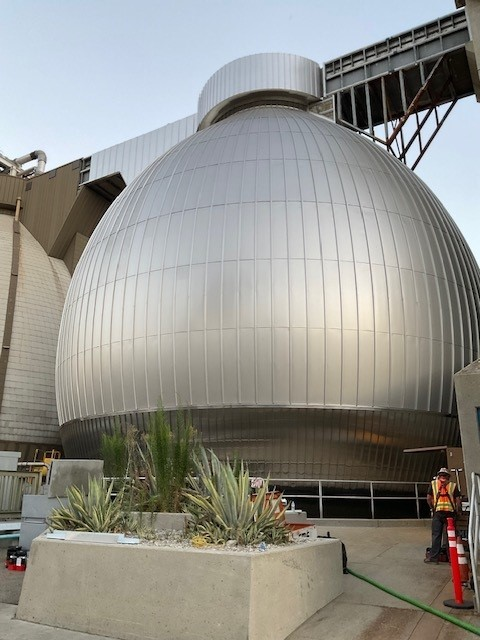 Terminal Island Water Reclamation Plant – Digester Cladding Replacement Terminal Island Water Reclamation Plant – Digester Cladding Replacement
445 Ferry Street
San Pedro, California 90731
Completion Date: 2024
Owner: City of Los Angeles.
Architect of Record: Parsons.
Engineer of Record for Structural Work: William Lu, P.E., Parsons.
Cold-Formed Steel Specialty Engineer:Josh Garton, P.E., S.E., McClure.
Cold-Formed Steel Specialty Contractor: Jeff Montague, Radius Track.
Award Entry Submitted by: Lauren Gutknecht, McClure.
Project Background
The digesters at the Terminal Island Water Reclamation Plant in San Pedro, California, are iconic, egg-shaped structures constructed from post-tensioned concrete. Due to significant deterioration of the original cladding, a replacement system was needed to ensure long-term performance in the high-corrosion, coastal environment.
A fully stainless-steel, cold-formed steel (CFS) solution was selected to address the coastal location and the constant moisture exposure inherent to wastewater treatment.
Design Challenges and Solutions
Unique Geometry and Design Challenges: The egg-shaped geometry of the digesters posed significant difficulties. The new cladding system had to conform to a curved surface and tolerate unknown variations in the 50-year-old concrete substrate. These uncertainties included the possibility that the structure might be fully radiused or segmented, potential discrepancies in existing concrete thickness and variations in anchor layouts.
To address these challenges, the design team developed custom-fabricated, radiused stainless-steel horizontal studs capable of simultaneously resisting strong-axis, weak-axis, torsional, and shear loading. The studs were formed in short arc segments to avoid the need for doubly curved framing. This solution required rigorous 3D modeling and a thorough review of testing data to verify that each stud could withstand the unique multi-directional forces.
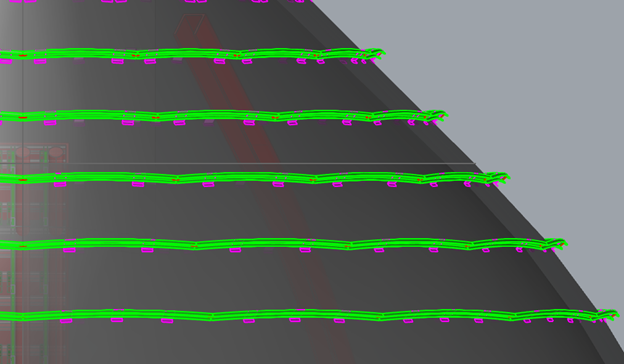
Stainless-Steel Framing System: A fully stainless-steel approach was essential to achieve maximum service life in an environment where even heavily coated carbon-steel materials would corrode rapidly. All components—including studs, screws, clips, anchors, and connectors—were specified in stainless steel. In areas spanning over walkways, straight stainless-steel furring was used to bridge varying distances back to the post-tensioned concrete shell, providing flexibility to accommodate misalignments and inconsistent substrate spacing.
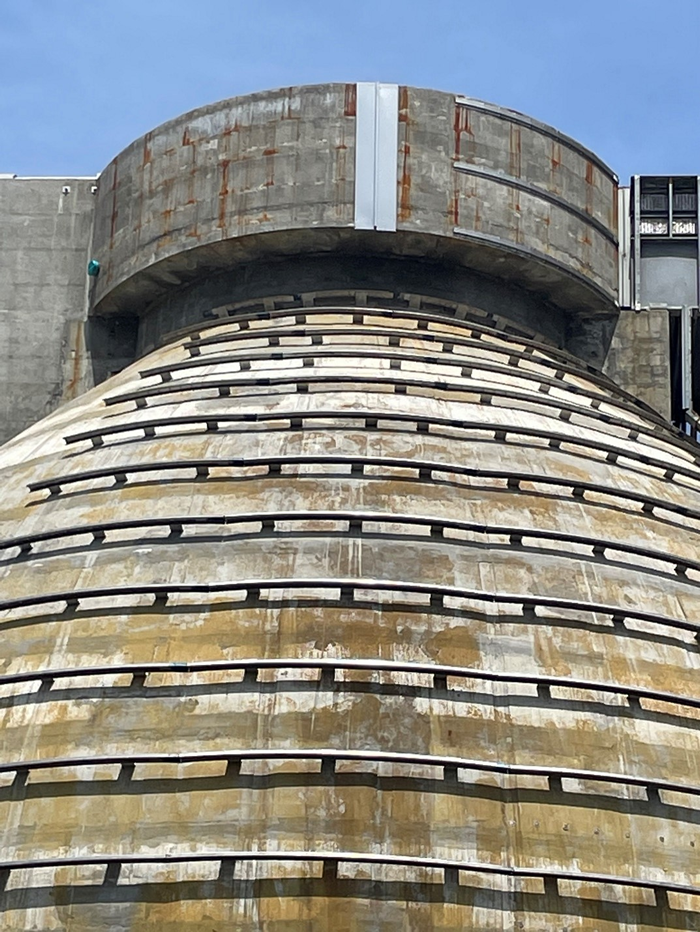
Clip Design and Variable Standoff Requirements: To address irregularities in the digester surface, the new cladding required the ability to stand off from the concrete by six to nine-and-a-half inches. Custom clips, attached to the studs’ webs, were designed with large tolerances and incorporated flat-plate bending to handle gravity loads. Given the significant flexural demands in the weaker axis, the clips were specified in quarter-inch stainless steel to ensure adequate strength and durability.
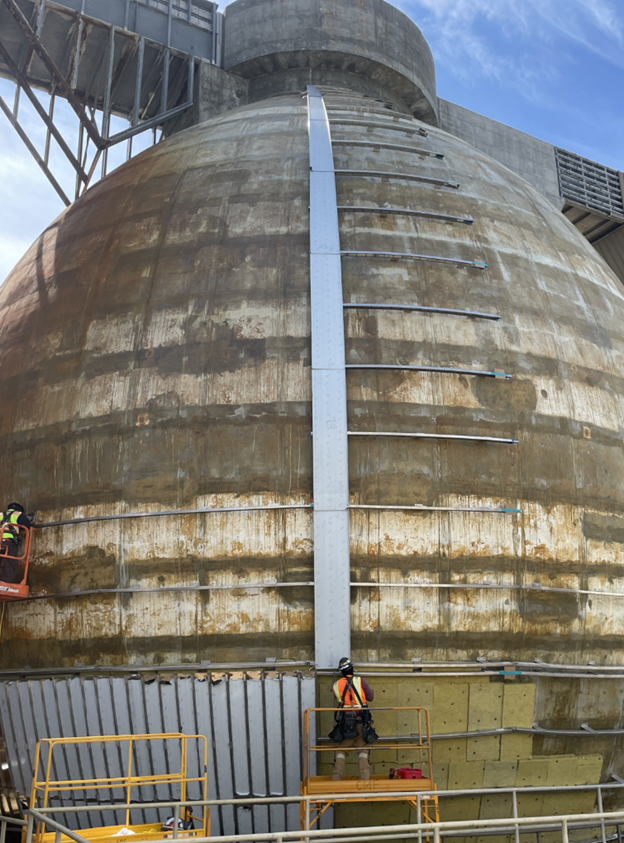
Anchorage Constraints and Field Testing: The post-tensioned concrete shells posed challenges regarding anchor depth, as the thickness of the concrete was unknown until the original cladding was removed. Anchors had to be shallow enough to avoid penetrating structural reinforcement. However, standard shallow anchors couldn’t meet the required capacities, particularly under prying forces from extended clips. On-site pull-out testing was conducted to generate accurate performance data, confirming that each anchor could resist design loads with minimal embedment.
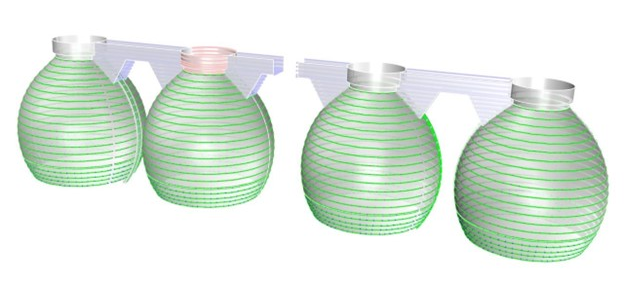
Conclusion
By integrating a radiused stainless-steel CFS framing system, custom high-strength clips, and field-verified shallow anchorage, the Terminal Island Water Reclamation Plant digester cladding replacement delivers a robust, corrosion-resistant exterior. The design effectively addresses complex egg-shaped geometry, uncertain existing conditions, and extended stand-offs required for the new stainless-steel cladding.
This project highlights the adaptability and resilience of cold-formed steel in highly specialized applications and sets a benchmark for durable, long-term solutions in corrosive coastal and wastewater environments.

|